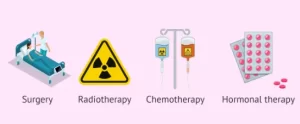Eyelid surgery, commonly known as blepharoplasty, encompasses various procedures tailored to address specific concerns of the upper and lower eyelids. Upper eyelid surgery targets excess skin and fat pads to rejuvenate the upper eyelid contour, while lower eyelid surgery focuses on correcting under-eye bags and puffiness. Asian eyelid surgery, a specialized form of blepharoplasty, aims to create or enhance the supratarsal crease for individuals with monolids, offering customized solutions for diverse aesthetic preferences and anatomical features.
Different Types of Eyelid Surgery (Blepharoplasty)
Eyelid surgery, also known as blepharoplasty, is a cosmetic procedure that focuses on improving the appearance and function of the eyelids. The eyes are often considered one of the face’s most prominent and expressive features, and eyelid surgery can enhance their overall aesthetic appeal while addressing functional issues such as drooping or sagging eyelids.
The cost of blepharoplasty, a key procedure for eyelid rejuvenation, varies widely depending on the complexity of the surgery, including additional techniques such as forehead lift, ptosis correction, and endoscopic brow lift. These complementary procedures, aimed at enhancing the overall aesthetic result, can significantly influence the final price. Understanding the interplay between these factors is essential for patients considering the investment in their appearance.
The procedure involves removing excess skin, fat, and muscle from the eyelids to create a more youthful and rejuvenated appearance. Depending on the patient’s specific concerns and desired outcomes, it can be performed on the upper and lower eyelids or in combination. Additionally, canthoplasty, a related procedure, can be performed to correct the shape and position of the outer corners of the eyes.
Upper Eyelid Blepharoplasty
Upper eyelid surgery focuses on improving the appearance of the upper eyelids. This procedure is commonly chosen by individuals with excess skin and fat deposits in the upper eyelid area, causing a heavy or hooded appearance.
The surgery involves making incisions along the natural creases of the upper eyelids, removing the excess tissue, and tightening the underlying muscles as needed. The incisions are carefully placed to ensure minimal scarring and natural-looking results.
Upper eyelid surgery enhances the aesthetic appeal and can address functional issues such as impaired vision due to drooping eyelids. Removing the excess tissue can significantly improve the field of vision, resulting in increased comfort and better eye function.
Procedure
This surgery focuses on rejuvenating the upper eyelids by removing excess skin, fat, and muscle tissue.
Indications
Upper eyelid blepharoplasty is commonly performed to correct drooping eyelids (ptosis), reduce hooded eyelids, and improve vision obstructed by excessive upper eyelid skin.
Benefits
It can result in a more youthful and alert appearance, as well as improved peripheral vision in cases of visual obstruction.
Lower Eyelid Blepharoplasty
Lower eyelid surgery primarily focuses on improving the appearance of the lower eyelids. It is a popular choice for individuals with under-eye bags, puffiness, fine lines and wrinkles in the lower eyelid area.
Lower eyelid surgery, also known as lower blepharoplasty, is a cosmetic procedure designed to enhance the appearance of the lower eyelids. This surgical technique addresses under-eye bags, puffiness, sagging skin, and wrinkles. The procedure rejuvenates the eyes and enhances the overall facial aesthetics, providing a more youthful and refreshed look.
The procedure involves making incisions either on the inside of the lower eyelid (transconjunctival approach) or just beneath, the lower lash line (subciliary approach).
Excess fat deposits can be removed or repositioned through these incisions, and loose or sagging skin can be tightened. Lower eyelid surgery aims to create a smoother, more youthful appearance and reduce the signs of aging around the eyes.
Procedure
Lower eyelid blepharoplasty involves the removal or redistribution of excess fat, skin, and muscle tissue from the lower eyelids.
Indications
It addresses under-eye bags, puffiness, and wrinkles, creating a smoother contour and reducing the appearance of dark circles.
Techniques
Lower eyelid blepharoplasty may utilize transconjunctival incisions (inside the lower eyelid) or external incisions just below the eyelashes, depending on the patient’s anatomy and goals.
- Asian Eyelid Surgery (Double Eyelid Surgery):
- Procedure: Asian eyelid surgery is a specialized blepharoplasty technique aimed at creating a supratarsal crease or “double eyelid” in individuals with a monolid or absent eyelid crease.
- Indications: Commonly sought for aesthetic reasons, Asian eyelid surgery enhances the definition of the eyelids and can make eye makeup application easier.
- Variations: Techniques such as full incision, partial incision, or non-incisional (suture) methods may be employed, depending on the patient’s eyelid anatomy and desired outcomes.
- Canthoplasty and Canthopexy:
- Procedure: Canthoplasty involves surgically altering the lateral canthal tendon to reposition the outer corner of the eye, whereas canthopexy reinforces the existing tendon without cutting it.
- Indications: These procedures are often performed in conjunction with eyelid surgery to address lateral canthal laxity, improve eyelid support, and enhance the shape of the eyes.
- Benefits: Canthoplasty and canthopexy can contribute to overall eyelid aesthetics and stability, particularly in cases of lower eyelid malposition or ectropion.
- Transconjunctival Blepharoplasty:
- Procedure: Transconjunctival blepharoplasty involves accessing the lower eyelid fat pockets through an incision made inside the lower eyelid, without external skin incisions.
- Indications: This technique is suitable for patients with mild to moderate lower eyelid fat prolapse or puffiness, offering a scar-minimizing approach and quicker recovery compared to traditional lower eyelid blepharoplasty.

Canthoplasty Surgery
Canthoplasty is a surgical procedure that focuses on reshaping and repositioning the outer corners of the eyes. It is often performed with eyelid surgery to achieve optimal aesthetic results. Canthoplasty is particularly beneficial for individuals with downward slanting or droopy outer corners of the eyes.
During canthoplasty, the surgeon makes incisions in the eye’s outer corner and adjusts the canthal tendon’s position, which supports the eyelids. This helps to create a more lifted and youthful appearance and improves the overall symmetry of the eyes.

Blepharoplasty Breakthroughs
Eyelid surgery, or blepharoplasty, encompasses various techniques aimed at rejuvenating the appearance of the eyelids and addressing aesthetic concerns or functional issues. Renowned institutions such as Harvard Medical School, Mayo Clinic, and the Bascom Palmer Eye Institute have established expertise in oculoplastic surgery, offering advanced training programs and conducting groundbreaking research in eyelid surgery techniques.
Notable pioneers in this field include Dr. William P. Chen, a leading authority in oculoplastic surgery, and Dr. Bobby S. Korn, known for his contributions to eyelid reconstruction and orbital surgery.
In the realm of commercial activity, companies like Allergan and Johnson & Johnson dominate the market for surgical instruments and materials used in eyelid surgery procedures. Additionally, hospitals with specialized oculoplastic departments, such as Wills Eye Hospital in Philadelphia and the Jules Stein Eye Institute at UCLA, are at the forefront of providing comprehensive care for patients undergoing eyelid surgery.
Recent statistics indicate a steady increase in the demand for blepharoplasty procedures, with over 130,000 surgeries performed in the United States alone in 2020. This growing trend underscores the importance of continued research and innovation in eyelid surgery to meet the evolving needs of patients seeking to enhance their ocular aesthetics and function.
Comparison of Each Type of Eyelid Surgery
Each type of This surgery serves a unique purpose and addresses specific concerns. Upper eyelid surgery primarily focuses on eliminating excess skin and fat in the upper eyelids, resulting in a more refreshed and youthful appearance. It can also improve vision by eliminating obstructions caused by drooping eyelids.
Lower eyelid surgery, on the other hand, is designed to correct under-eye bags, puffiness, and fine lines or wrinkles in the lower eyelid area. By removing or repositioning excess fat deposits and tightening the skin, lower eyelid surgery helps create a smoother and more rejuvenated look.
Canthoplasty surgery complements This surgery by reshaping and repositioning the outer corners of the eyes. It is particularly beneficial for individuals with droopy or downward-slanting outer corners, as it helps to create a more lifted and symmetrical appearance.
The choice of This surgery will depend on the specific concerns and goals of the individual. Some may require a combination of procedures to achieve the desired outcome. Consulting with an experienced plastic surgeon is crucial to determine the most suitable treatment plan.

It’s advisable to take about 1 week off work to recover from eyelid surgery.NHS Uk
best conditions for Eyelid Surgery
The best conditions for eyelid surgery, also known as blepharoplasty, involve a combination of factors related to both the patient and the surgical environment. Here are some optimal conditions for undergoing eyelid surgery:
- Good Overall Health:
- Patients should be in good general health, free from any underlying medical conditions that could increase the risk of complications during surgery or impede the healing process.
- Realistic Expectations:
- Patients should have realistic expectations about the outcomes of eyelid surgery. While blepharoplasty can achieve significant improvements in eyelid appearance, it’s essential to understand its limitations and potential risks.
- Stable Eye Health:
- Patients should have stable eye health, free from conditions such as severe dry eye syndrome, glaucoma, or retinal disorders that could affect surgical outcomes or increase the risk of post-operative complications.
- Non-Smoking Status:
- Smoking can impair the body’s ability to heal properly after surgery and increase the risk of complications such as poor wound healing, infection, and delayed recovery. Therefore, patients are advised to quit smoking well in advance of eyelid surgery.
- Experienced Surgeon:
- Choosing a board-certified plastic surgeon or oculoplastic surgeon with extensive experience and expertise in eyelid surgery is crucial. A skilled surgeon can assess the patient’s specific concerns, anatomy, and goals and recommend the most appropriate surgical approach to achieve optimal results.
- Individualized Treatment Plan:
- Each patient’s eyelid anatomy and aesthetic goals are unique, so it’s essential to develop a customized treatment plan tailored to their specific needs and preferences. This may involve addressing issues such as upper eyelid hooding, lower eyelid bags, or both, using surgical techniques that optimize outcomes while minimizing risks.
- Supportive Post-Operative Care:
- Following eyelid surgery, patients should have access to comprehensive post-operative care, including instructions for wound care, medications, and follow-up appointments with the surgeon. Adequate support from family or caregivers during the initial recovery period can also facilitate a smoother healing process.
- Positive Emotional State:
- Patients should be in a positive emotional state and fully committed to the decision to undergo eyelid surgery. Feeling emotionally prepared and confident about the procedure can contribute to a more satisfying overall experience and outcome.
Summary
In conclusion, the diverse array of eyelid surgery techniques, including upper eyelid surgery, lower eyelid surgery, and Asian eyelid surgery, underscores the versatility and customization available to patients seeking to enhance the aesthetics and function of their eyelids. Upper eyelid surgery addresses issues such as hooded lids and excess skin, rejuvenating the upper eyelid region and restoring a more youthful appearance.
Lower eyelid surgery targets under-eye bags and puffiness, smoothing the lower eyelid contour and rejuvenating the overall facial appearance. Additionally, Asian eyelid surgery offers tailored solutions for individuals seeking to create or enhance the supratarsal crease, reflecting the growing demand for culturally sensitive cosmetic procedures that respect diverse ethnic features.
Furthermore, canthoplasty and canthopexy procedures play pivotal roles in eyelid surgery, providing options for correcting eyelid laxity and enhancing eyelid support. These techniques, often combined with eyelid lifts, contribute to comprehensive rejuvenation of the periocular area, resulting in natural-looking and harmonious outcomes.
As the field of eyelid surgery continues to evolve, with advancements in surgical techniques and materials, patients can expect increasingly refined procedures that prioritize safety, efficacy, and patient satisfaction. Through collaboration with experienced surgeons and adherence to best practices, individuals can achieve their desired aesthetic goals while maintaining the health and integrity of the delicate eyelid structures.
FAQs
- What is eyelid surgery?
- Eyelid surgery, also known as blepharoplasty, encompasses various surgical techniques aimed at rejuvenating the appearance of the eyelids. These procedures can address issues such as excess skin, fat, or muscle in the upper and lower eyelids, as well as concerns specific to certain ethnic groups, such as Asian eyelid surgery.
- What are the different types of eyelid surgery?
- There are several types of eyelid surgery, including upper eyelid surgery, lower eyelid surgery, Asian eyelid surgery (double eyelid surgery), and specialized techniques such as canthoplasty and canthopexy. Each type of surgery targets specific concerns, such as hooded eyelids, under-eye bags, or the creation of a supratarsal crease.
- Who is a candidate for eyelid surgery?
- Candidates for eyelid surgery typically include individuals bothered by the appearance of their eyelids due to aging, genetics, or other factors. Ideal candidates are in good overall health, have realistic expectations about the outcomes of surgery, and have specific concerns that can be addressed through eyelid surgery.
- What are the benefits of eyelid surgery?
- The benefits of eyelid surgery vary depending on the type of procedure and the individual’s goals. Generally, eyelid surgery can result in a more youthful and refreshed appearance, improved eyelid symmetry, reduced under-eye bags or puffiness, and enhanced self-confidence.
- What is the recovery process like after eyelid surgery?
- Recovery from eyelid surgery typically involves some bruising, swelling, and discomfort, which gradually subside over the following weeks. Patients are advised to follow post-operative care instructions provided by their surgeon, including using cold compresses, taking prescribed medications, and avoiding strenuous activities.
- Are there any risks or complications associated with eyelid surgery?
- Like any surgical procedure, eyelid surgery carries some risks, including infection, bleeding, scarring, dry eyes, and changes in eyelid position or sensation. However, these risks are relatively rare when the surgery is performed by a qualified and experienced surgeon.
https://www.nhs.uk/conditions/cosmetic-procedures/cosmetic-surgery/eyelid-surgery/



